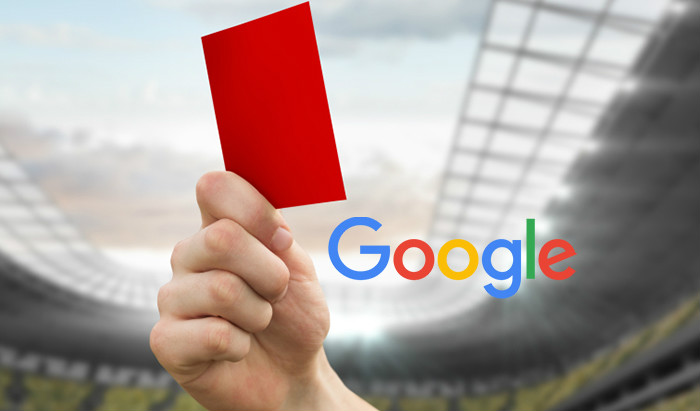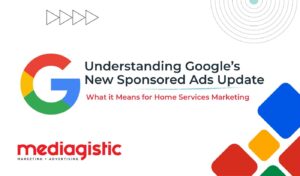
What is the Impact of a Google Penalty on Your Business?

Your site traffic has been growing by leaps and bounds for months, and your site has been skyrocketing in the SERPs. One day, however, you suddenly wake up to find a dramatic drop in performance metrics across the board. If your traffic, page views, CTRs, and more all fell off overnight or experienced a steady but significant decline, you were probably hit by a Google penalty.
There are several different types of penalties that you might face, but all spell trouble for your bottom line. Whether you’re already facing a Google penalty, or you’re simply trying to avoid one, it’s important to understand what they’re all about.
Types of Google Penalties
Among the most common Google penalties are Panda and Penguin. Despite their adorable names, these algorithms present a serious problem if they find your site lacking. Google Panda is an update that evaluates your site’s quality and assigns it a score. If you score low on quality, you’ll notice a steady decline in your page traffic across all keywords.
Google Penguin penalizes aggressive link building. This algorithm looks for unnatural link patterns. Violators include low-quality artificial links that were created with the sole intention of increasing your domain authority. If you paid for links, set up a link exchange, used automated link creation tools, posted backlinks on a private blog network (PBN), or posted links on a site without an editorial wall (known as a “link dump”), Google may have determined that was a violation. If you’re hit with a Penguin penalty, you’ll see a steep drop in terms of search presence.
The Impact of a Penalty
Google penalties have a significant impact on your Web presence, meaning you may be less likely to be found in a Google search (if at all). Seeing as how Google accounts for 93 percent of all mobile and desktop searches worldwide, this means that your site could become virtually invisible for consumers hoping to purchase your products and services.
Meanwhile, your competitors will benefit from the vacuum created by your business’ sudden absence in search results. Simply put, then, a Google penalty means real and immediate loss of potential revenue for your business.
Ignore the penalty and you’ll find it almost impossible to recover. Your site traffic will continue to drop steadily, particularly if you’re facing a Panda penalty. Left unmanaged, your penalty will gradually destroy your website traffic.
How to Restore Your Site’s Traffic
If you’re hit with a penalty, you need to act fast. If you’re dealing with a Panda penalty, it’s time to address the quality of your site content. Ask whether you’re providing the best page on the Internet for actionable and accurate information on a topic. If not, get to work improving the situation.
When facing a Penguin penalty, you need to overhaul your linking strategy and an SEO professional needs to do a site toxicity analysis. Depending on severity, the solution to this problem may range from disavowing some links to a full-scale digital detoxification. In extreme cases, it may become necessary to abandon the domain entirely and start over from scratch.
Case in point: One Mediagistic client came to us from another agency with a site that had more than 100,000 spammy and toxic backlinks, which triggered some nasty penalties. They had to drop their URL and start over on a new domain in order for their website to begin appearing in search results organically again.
If your problem is this severe, you may need to start over with a new URL, as this client did. Drastic action is often the best solution for serious penalties. And it only underscores why a white hat marketing approach (not cheating) is the only sustainable approach for businesses looking for stable, long-term growth.
The Importance of White Hat Marketing
Google’s penalties were put in place to punish black hat marketing tactics (cheating) and reward sites that use white hat strategies. Black hat techniques like link farms, keyword stuffing, and blog spam are no longer even the marginally viable solutions that they may have been 10 years ago.
White hat strategies adhere to Google’s Webmaster guidelines and published search engine optimization rules. If you want to avoid the negative effects of a Google penalty, then your online marketing tactics need to align as closely as possible to these rules and regulations.
Mediagistic is committed to using only white hat marketing techniques in our Internet marketing campaigns. If you’re starting from scratch, we’ll help you steer clear of penalties from the very beginning. If you’re already facing a penalty for past marketing mistakes, we can help you rebuild and recover with a site that’s optimized to perform according to Google’s best practices.
Chase Schultz is an Account Development Manager at Mediagistic. He works to help local businesses develop their Web presence every day and places a major emphasis on continuous improvement and efficiency. Connect with him on Linkedin.
You May Also Like

Google’s “Have AI Get Prices” Feature: Rewriting Local Search for HVAC & Home Services
December 15, 2025In recent months, Google has quietly rolled out a major update to local search with its new “Have AI Get Prices” functionality,… Continue Reading Google’s “Have AI Get Prices” Feature: Rewriting Local Search for HVAC & Home Services…

Mediagistic Announces Strategic Partnership with EGIA to Deliver Enhanced Marketing Solutions for Home Services Contractors
November 10, 2025Tampa, FL – Mediagistic, a full-service marketing and advertising agency specializing in contractors and service-based businesses, today announced a strategic partnership with… Continue Reading Mediagistic Announces Strategic Partnership with EGIA to Deliver Enhanced Marketing Solutions for Home Services Contractors…

Understanding Google’s Sponsored Results Update: What it Means for Home Services Marketing
October 20, 2025Google is once again reshaping how paid ads appear in search results, and this change (called the Google Sponsored Results Update) could… Continue Reading Understanding Google’s Sponsored Results Update: What it Means for Home Services Marketing…